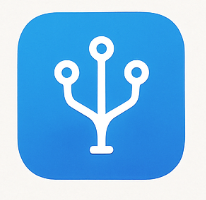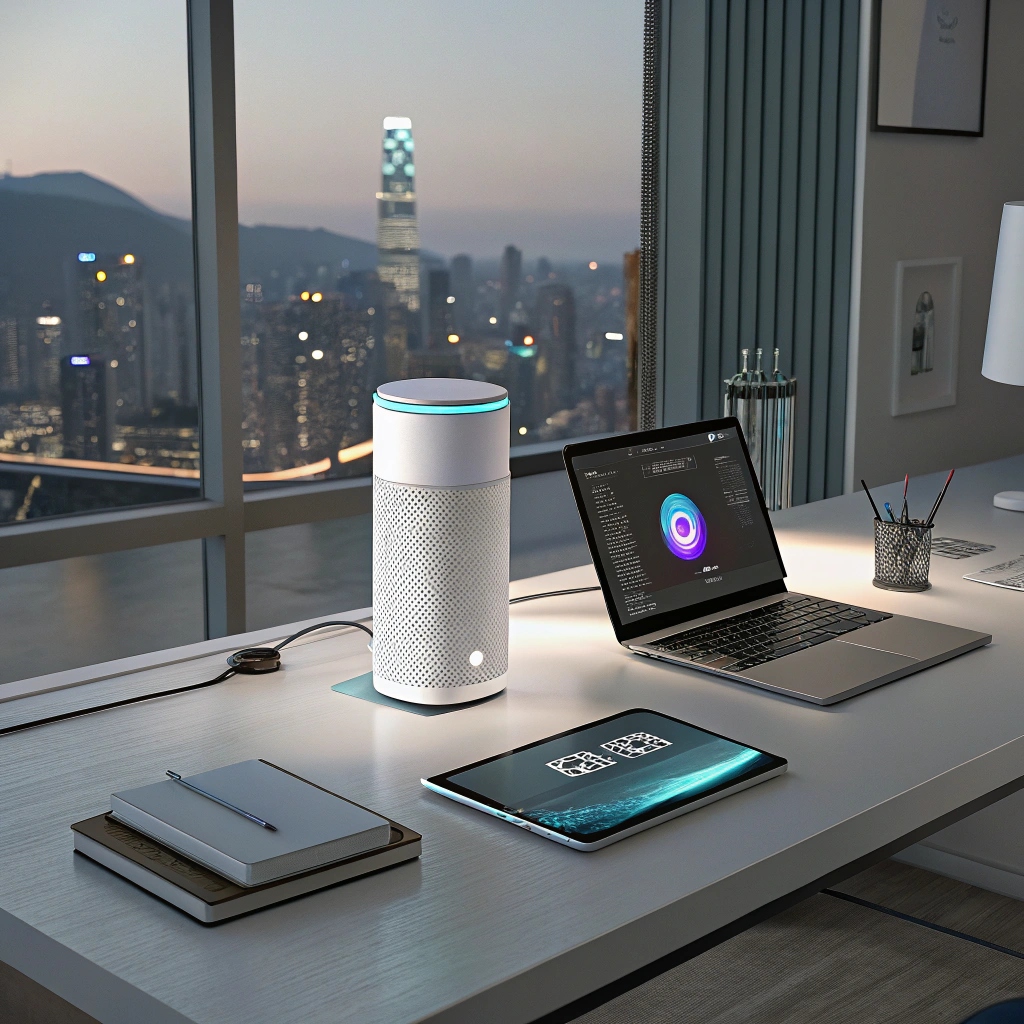AI personal assistants have evolved far beyond simple voice-controlled gadgets. In 2025, they are intelligent digital companions—automating tasks, understanding context, and adapting to individual needs in both personal and professional settings. These assistants help manage calendars, write emails, optimize productivity, monitor wellness, and even deliver tailored business insights.
According to recent industry reports, the global market for AI virtual assistants is projected to exceed $35 billion USD by 2026, driven by advancements in large language models (LLMs), multimodal interaction, and agentic AI. As the boundary between work and personal life becomes more fluid—particularly in remote and hybrid work cultures—AI assistants are becoming essential tools for modern productivity.
Whether you’re a freelancer managing client communications, a busy executive scheduling high-stakes meetings, or a student balancing assignments and self-care, AI personal assistants are transforming the way we live and work.
What Makes an Assistant “Personalized”?
Not all virtual assistants are created equal. While generic tools like Siri and Alexa can execute simple tasks like setting alarms or turning on lights, personalized AI assistants are purpose-built to understand your behavior, adapt over time, and deliver nuanced, context-rich support.
Key Features of Personalized Assistants:
- Preference Learning: Tracks habits, like your preferred focus hours, and adjusts suggestions accordingly.
- Context Awareness: Knows whether you’re in a meeting, commuting, or working from home—and responds appropriately.
- Task Automation: Handles repetitive workflows such as inbox triage, meeting follow-ups, or report summarization.
- Emotional Sensitivity (emerging): Detects stress levels via voice or text to offer empathetic responses.
📊 Feature Comparison
|
Feature |
Generic Assistant | Personalized Assistant |
|
Functionality |
Basic tasks (alarms, queries) | Customized, multi-step workflows |
|
Learning Capability |
Minimal or fixed | Adaptive, real-time learning |
|
Interaction Style |
Scripted commands |
Natural, dynamic dialogue |
|
Proactivity |
Passive response |
Anticipates needs |
| Use Case Fit | General consumers |
Professionals, teams, creators |
🔍 Example: Ask Siri to schedule a meeting and she’ll simply check your calendar. Ask Motion, and it’ll find an optimized time, move lower-priority tasks, and protect your focus block.
Top AI Personal Assistants in 2025
Today’s AI assistant landscape is diverse—ranging from voice-controlled home assistants to enterprise-grade automation platforms. Below are some of the top tools making waves in 2025:
|
Assistant |
Best For | Key Strengths |
Platform(s) |
|
Siri |
iOS/macOS users | Deep Apple integration, privacy-first design |
iPhone, Mac, HomePod |
|
Google Assistant |
Android users, multilinguals | Powerful search, Google ecosystem |
Android, Nest, Chrome |
|
Alexa |
Smart home control | Voice command skills, device automation |
Echo, Fire devices |
|
Motion |
Calendar optimization | AI scheduling, focus time protection | Web, Desktop |
|
Otter.ai |
Meeting transcriptions |
Real-time recording, summaries, collaborative | Web, Zoom, Meet |
| Notion AI | Productivity | Note generation, content creation, organization |
Web, Mobile |
|
Superhuman |
Email management | Fast inbox triage, productivity-driven UI | Gmail/Outlook |
|
Monica AI |
All-in-one utility |
GPT-4 powered tasks: search, write, summarize | Web, Extension |
|
Cleo |
Personal finance | Budget tracking, spending summaries, alerts |
App (iOS/Android) |
Each of these tools serves a distinct purpose. The most effective assistant is the one that integrates seamlessly into your ecosystem and aligns with your daily challenges.
AI Personal Assistants by Category
1. Writing & Content Creation
- ChatGPT, Jasper, and Copy.ai help marketers, bloggers, and content creators draft articles, emails, and product descriptions quickly.
- Features like tone adjustment, SEO suggestions, and real-time collaboration make them powerful allies for content teams.
🔍 Use Case: A solo entrepreneur uses Jasper to write weekly newsletters while Copy.ai generates social captions, freeing hours per week.
2. Meeting & Scheduling
- Otter.ai, Fireflies.ai, and Motion specialize in optimizing meeting time, capturing notes, and planning your day.
- They integrate with Google Meet, Zoom, and Outlook, and many offer automatic task assignment based on conversation context.
🔍 Use Case: A product manager uses Otter.ai to transcribe team meetings and Fireflies to send instant action items to Asana.
3. Voice Assistants & Smart Devices
- Siri, Alexa, and Google Assistant remain the top choices for voice interaction and home automation.
- Great for hands-free control of reminders, timers, music, and smart home routines.
🔍 Use Case: A remote worker controls lighting and heating with Alexa and checks morning meetings with Google Assistant while prepping coffee.
4. Productivity & Task Management
- Notion AI, ClickUp AI, and Clockwise organize complex workflows, project tracking, and note-taking with automation and AI summaries.
🔍 Use Case: A marketing team uses ClickUp AI for brainstorming campaigns, assigning tasks, and receiving summarized briefs.
5. Customer Support
- Intercom, Ada, Tidio, and Moveworks offer AI-powered chat assistants that handle FAQs, troubleshoot issues, and escalate tickets when needed.
6. Specialized Tools
- Cleo (finance), Delta Travel Assistant, Rezolve.ai (IT support), and Kore.ai (HR/enterprise support) provide tailored automation based on industry-specific needs.
How AI Personal Assistants Work
To understand how these assistants are able to respond like a human, automate tasks, and adapt over time, it helps to break down the underlying technologies:
Core Technologies
|
Technology |
Role |
Example Feature |
| NLP (Natural Language Processing) | Understands input like voice/text and intent | “Schedule a call” → sets meeting |
| ML (Machine Learning) | Learns from user patterns, improves over time | Suggests best times to work |
| LLMs (Large Language Models) | Generates natural, contextual responses | Summarizes emails, writes blogs |
| Agentic AI | Makes proactive decisions with minimal prompts | “Shift my schedule” → reassigns blocks |
| Data Integration | Syncs with other tools to provide intelligent actions | Pulls data from email + calendar |
🎯 Workflow Example: You say, “I’m feeling burned out—can we lighten the load today?”
—Your assistant detects tone via NLP → flags calendar via ML → reschedules non-urgent tasks via agentic AI → notifies your team.
Use Cases Across Industries
AI personal assistants are powering transformation across sectors:
🔬 Healthcare
- Virtual health assistants handle appointment booking, symptom triage, and reminders.
- Babylon Health uses AI to offer 24/7 health advice based on patient input.
💰 Finance
- Assistants like Cleo offer budget summaries, spending alerts, and savings recommendations.
- Banks deploy AI bots for secure fraud alerts and account guidance.
👥 Human Resources
- Assistants streamline onboarding, benefits Q&A, and training follow-ups via Slack or MS Teams integrations.
- Rezolve.ai offers autonomous employee support for IT and HR queries.
🎓 Education
- Students use AI tutors like Quizlet AI or Khanmigo to get feedback, organize study time, and prepare for tests.
- Educators automate grading and tailor curriculum via LLM-based analysis.
🏭 Manufacturing
- AI tools alert supervisors about maintenance needs, track production metrics, and reorder inventory automatically.
📞 Customer Service
- AI chatbots like Ada or Intercom Fin offer 24/7 multilingual support and escalate only the most complex queries.
Security & Privacy Considerations
With AI assistants accessing calendars, documents, email accounts, and sometimes even financial or medical data, privacy is non-negotiable.
🔒 Checklist for AI Assistant Security:
|
Measure |
Description |
| End-to-End Encryption | Secures communication during transmission |
| Role-Based Access Control | Limits who can access which features or data |
| Data Minimization | Only collects what’s necessary |
| Third-Party Vetting | Verifies the safety of integrations (e.g., Zoom, Slack) |
| Transparency & Consent | Gives users control over what’s stored or shared |
📌 Tip: Always read the assistant’s privacy policy and disable unnecessary permissions.
Future Trends in AI Personal Assistants
AI assistants in 2025 are advanced—but the next wave promises even more intelligence, autonomy, and emotional depth.
🔮 What’s Coming:
- Emotional Intelligence: Detect stress or excitement via tone or biofeedback and respond appropriately.
- Hyper-Personalization: AI will use behavioral data, location, and mood to suggest wellness breaks, reschedule meetings, or recommend learning content.
- Multimodal Interaction: Assistants will handle voice, gesture, text, and visual cues fluidly—like looking at your calendar and saying “I need breathing room,” and it understands.
- Agentic Autonomy: Assistants will act like digital project managers—deciding priorities and negotiating tasks across your apps and colleagues.
- Biometric Integration (experimental): Tools like Lindy.ai may one day combine sleep, stress, and productivity data to coach optimal work rhythms.
AI personal assistants in 2025 are no longer gimmicks—they’re productivity partners, strategy enhancers, and stress reducers. With tools ranging from smart schedulers and transcription wizards to voice-controlled home managers and industry-specific copilots, there’s an AI assistant for everyone.
Choosing the right assistant is about matching functionality with lifestyle. Start with your goals—do you want to focus better, delegate repetitive tasks, or simply stay more organized? Then choose the assistant built for that job.
Explore. Experiment. Integrate. The future of productivity isn’t coming—it’s already here.


Laisser un commentaire